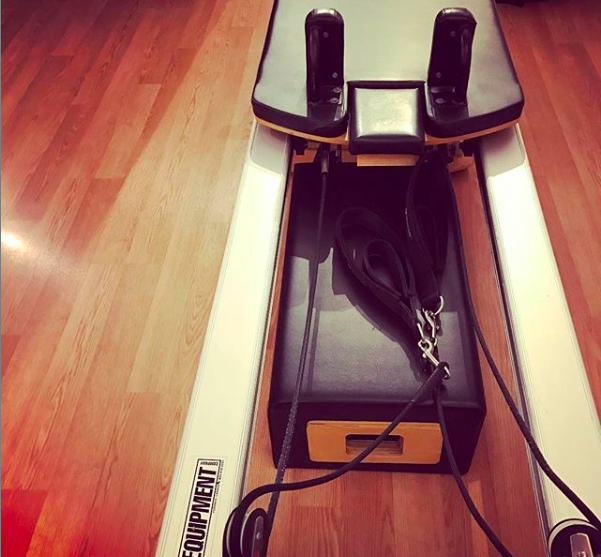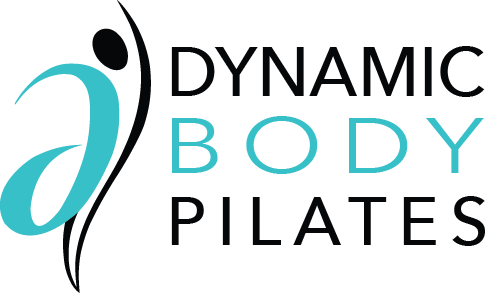
Footwork on the Reformer
Many of you have asked us about the way exercises are set up in a Pilates Reformer class, or maybe you’re struggling with specific movements during your private sessions. You’re not alone — and it’s exactly why we’re launching more DBP Tutorials, giving you some insider info into classic Pilates exercises and how to do them right.
Let’s start with one of the foundational sequences in any Reformer workout: Footwork on the Pilates Reformer.
Watch the Pilates Reformer Footwork Tutorial
Turn up the volume to hear DBP Founder Rebecca Lubart break down Pilates Reformer footwork, including why it’s such an essential starting point — and some key form tips to help you get the most out of your workout.
What Is Pilates Footwork?
Pilates footwork is often the first sequence performed in a Reformer class. You’ll lie down with your feet on the footbar, pressing the carriage out and in using different foot positions. It may seem simple — and that’s the point. This sequence is where we set the foundation for your entire Pilates session.
At DBP, we consider it your movement check-in:
- Are your hips aligned?
- Are you initiating from your core?
- Are your feet grounded and stable?
- Are your knees tracking correctly?
- Is your breath supporting your movement?
Why Pilates Reformer Footwork Matters
Think of Pilates reformer footwork as your baseline. It allows you to build strength, alignment, and awareness from the ground up. By varying foot placement — heels, toes, arches — we’re able to target different muscle groups, fire up the glutes and hamstrings, engage the deep core, and activate the often-overlooked intrinsic muscles of the feet.
This isn’t just about leg strength. It’s about:
- Proper biomechanics
- Spinal alignment
- Core engagement
- Muscular balance
- Joint stability
And yes — it sets the tone for everything that comes next.
The Benefits of Proper Pilates Footwork on the Reformer
When you practice Pilates footwork with precision and intention, you’re not just warming up — you’re laying the foundation for better movement in and out of the studio. Here’s what proper Reformer footwork helps you achieve:
Improved Alignment
By focusing on hip-knee-ankle tracking and spinal neutrality, footwork helps correct postural imbalances and improves overall body alignment.
Stronger Core Engagement
Even though you’re working the legs, the power comes from your center. Done correctly, Reformer footwork activates your deep core and supports better spinal stability throughout your session.
Better Joint Health
Footwork promotes healthy articulation of the feet, ankles, knees, and hips. This reduces wear and tear on the joints and encourages smoother, more efficient movement patterns.
Enhanced Muscle Awareness
Switching between foot positions — heels, toes, arches — helps you target and isolate specific muscle groups, build balanced strength, and activate underused muscles.
Increased Body Control
The slow, mindful nature of footwork sharpens neuromuscular connection, leading to improved control, coordination, and precision across all Pilates exercises.
Ground-Up Strength
Your feet are your foundation. Proper footwork builds strength and stability from the ground up, which improves performance in standing, walking, running, and athletic movements.
Common Mistakes in Pilates Footwork
Even though Pilates footwork seems straightforward, it’s easy to go on autopilot. Some of the most common issues we see include:
- Gripping the glutes or quads rather than using the full leg and core system
- Rolling the ankles inward or outward instead of maintaining a neutral foot position
- Locking the knees at the top of the extension
- Leading with the feet rather than initiating from the center
This is where working with a trained instructor really matters. At Dynamic Body Pilates, we give you real-time feedback to help you feel the difference when everything is properly aligned.
Ready to Refine Your Pilates Reformer Footwork?
Whether you’re a beginner or you’ve been practicing for years, Pilates Reformer footwork is a tool you’ll return to again and again — not just to warm up the body, but to train it to move better.
If you’ve ever wondered if you’re doing it “right,” now’s the perfect time to schedule a session with one of our certified instructors. We’ll help you fine-tune your form, so every rep is meaningful — and you can start building lasting strength and ease of movement.
Curious to learn more about classic Reformer sequences?
Follow us on YouTube or book your Dynamic Body Assessment Session to experience Pilates that’s personalized, precise, and truly transformative.
FAQs About Pilates Reformer Footwork
What is footwork on the Pilates Reformer?
Footwork on the Pilates Reformer is a foundational series typically performed at the beginning of a session. While lying on the Reformer, you press the carriage out and in using your feet in different positions on the footbar. This sequence activates the core, aligns the spine, and warms up the lower body for more complex movements.
Why is Pilates footwork important?
Pilates footwork is essential for developing proper alignment, joint stability, and muscle engagement. It sets the tone for your entire session by helping you connect to your breath, find your center, and establish efficient movement patterns. It’s especially valuable for correcting imbalances and improving posture.
What muscles does Pilates footwork work?
Pilates footwork strengthens the glutes, hamstrings, quads, calves, hip flexors, and even the small stabilizing muscles in your feet and ankles. When done correctly, it also activates the deep abdominal muscles and pelvic floor to support core stability.
What are the different foot positions in Pilates Reformer footwork?
The main foot positions include:
- Heels on the bar (for hamstring and glute focus)
- Toes on the bar (for quad and calf engagement)
- Arches on the bar (for foot articulation and ankle stability)
Each position trains the body in slightly different ways, building strength, control, and awareness.
Can beginners do Pilates footwork?
Yes! Pilates footwork is safe and accessible for beginners, yet still challenging for advanced practitioners. At Dynamic Body Pilates, we guide you through each variation with personalized instruction to ensure safe alignment and proper muscle engagement.
How often should I practice Reformer footwork?
If you’re doing Reformer Pilates regularly, you’ll likely perform footwork every session. It’s not just a warmup — it’s an alignment tool. Practicing consistently helps reinforce good movement habits and build foundational strength over time.
